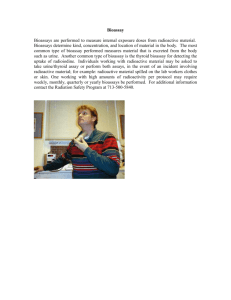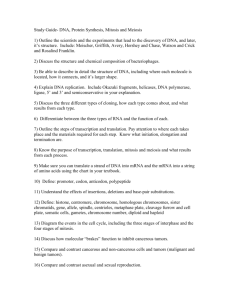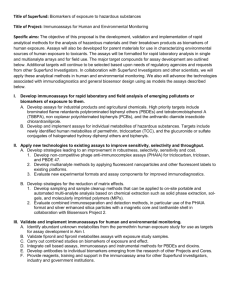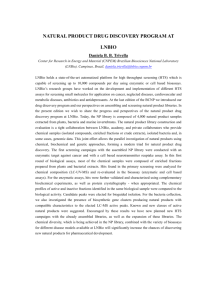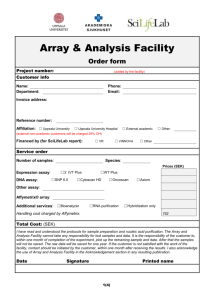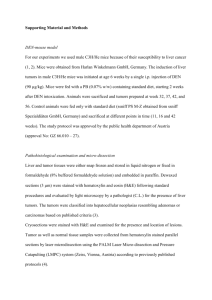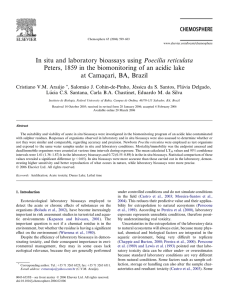10/23/06
advertisement
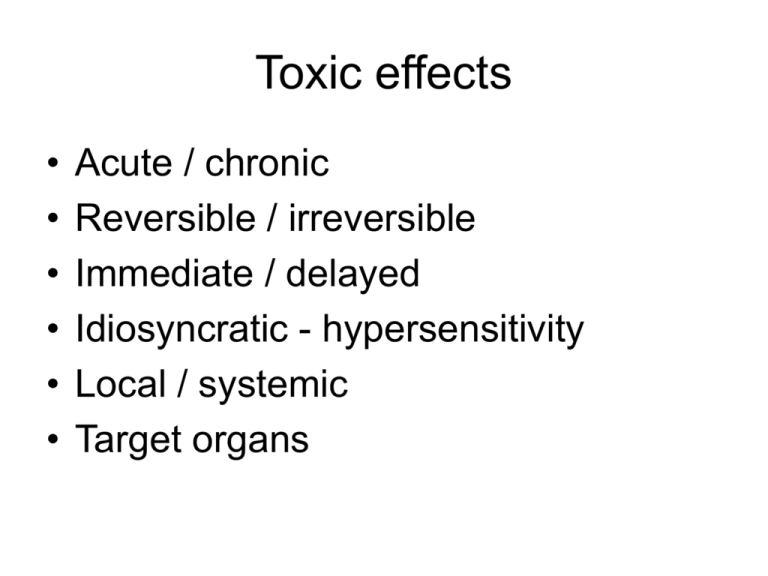
Toxic effects • • • • • • Acute / chronic Reversible / irreversible Immediate / delayed Idiosyncratic - hypersensitivity Local / systemic Target organs Toxicological Screening Molecular assays • DNA damage (eg AP sites) • DNA binding (eg adducts) • Altered gene expression (Gene arrays) • Altered protein synthesis (Proteomics) DNA Binding Gene array Protein 2D gel Toxicological Screening Bioassays • • • • • Cell Toxicity Assays (Short Term) Cell Genotoxicity Assays (Short Term) Tissue culture (Primary cells, cell lines) Isolated perfused organs Whole Animal Studies (Medium - Long Term) Cell Toxicity Assays • • • • • Trypan Blue Exclusion Neutral Red Uptake ATP Production MTT assay Assays for apoptosis (TUNEL) In vitro short-term tests for genotoxicity Tests for mutagenesis/carcinogenesis Bacterial mutagenesis e.g. Ames assay Mammalian mutagenesis e.g. Mouse Lymphoma L 5178Y, V79 DNA repair e.g. Sister Chromatid Exchange (SCE) Chromosome damage, Cytogenetics e.g. Chromosome Aberrations (CA), Strand Breakage Cell transformation e.g. BALB/3T3, C3H/10T 1/2 Tissue culture Isolated perfused liver Isolated perfused lung Bioassays in vivo Tests for initiators Skin Tumors in Mice (Sencar) Pulmonary Tumors in Mice (Strain A) Tests for promoters Skin Tumors in Mice (Sencar) Pulmonary Tumors in Mice (Strain A) Altered Foci in Rodent Liver Breast Cancer in Female Rats (Huggins model) NTP Cancer Bioassays Bioassays in vivo Experimental Design Generally two or more species, equal numbers of each gender Short-term: Acute 24-48 h Sub-acute Sub-chronic 10% of life-span, 90 days Observe: Food consumption, body weight gain, general appearance, behavior At sacrifice: Organ weights, gross pathology,microscopic examination of major organs, clinical laboratory tests on blood and urine. Other studies if indicated by observations, clinical chemistry or gross lesions. Determine MTD for long-term studies. Bioassays Long-term: Chronic Entire Life-span Observe: Food consumption, body weight gain, behavior Mortality and morbidity, Cancer At sacrifice: Organ weights, gross pathology, histopathology. More detailed assessment of tumors To define the nature of the toxicity, carcinogencity, NOAEL Biomarkers Biomarkers of Exposure Metabolites (urine, saliva, blood) DNA adducts (peripheral blood lymphocytes) Protein adducts (blood) Biomarkers of Effect Chromosomal aberrations Mutations

